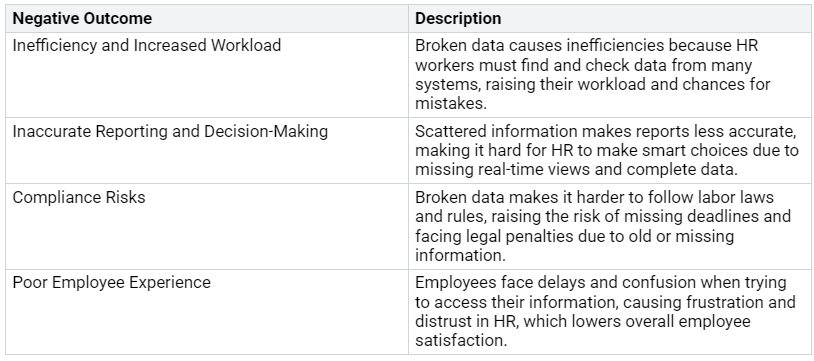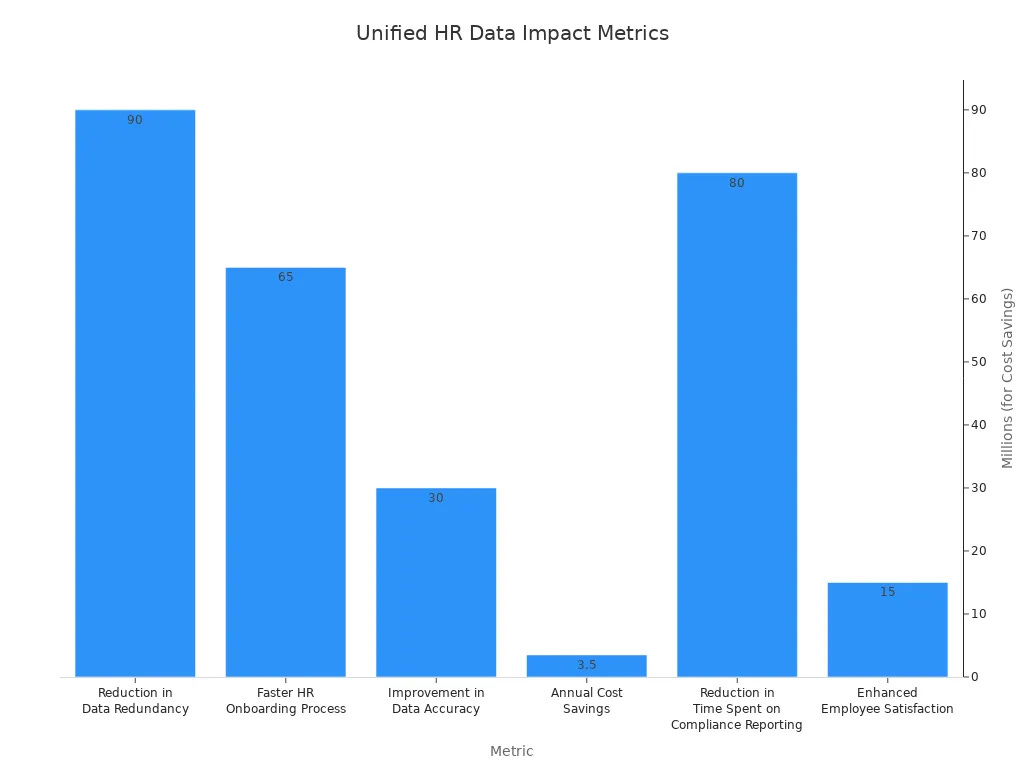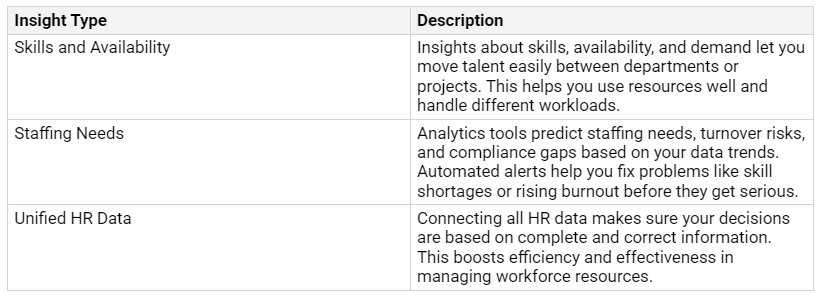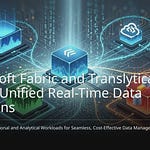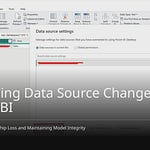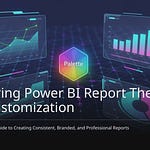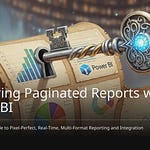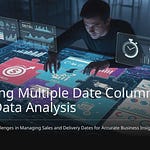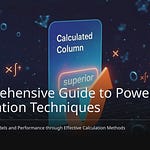In today’s busy business world, unified HR data is very important. It helps improve workforce agility. When you combine your HR data, you get useful insights. These insights help you react fast to changes. Microsoft Fabric is a key solution. It lets you connect different HR datasets easily. With its features, you can gather workloads in OneLake. This improves data agility and decision-making. This connection makes your processes smoother. It also encourages real-time teamwork among teams. This way, you stay ahead in managing your workforce.
Key Takeaways
Unified HR data helps make better decisions. It gives accurate information. This helps organizations react fast to changes.
Microsoft Fabric links different HR data sources. It creates one true source of information. This connection cuts down on waste and improves data quality.
Helpful insights from unified HR data can predict staffing needs. They also show turnover risks. This helps organizations manage their talent well.
Breaking down data barriers encourages teamwork. It also makes reporting more accurate. This results in better workforce planning and flexibility.
Using Microsoft Fabric needs clear goals. It also needs regular checks on data quality. This makes sure the HR team becomes a key partner in the organization.
Unified HR Data Overview
Unified HR data is very important in today’s HR work. It brings together different data sources into one clear system. This helps HR workers get correct information fast. You can then make smart choices that improve workforce agility.
Key Components of Unified HR Data
Unified HR data has several main parts. Knowing these parts helps you see why integration is valuable. Here are the main types of data found in unified HR data systems:
Organizations should focus on combining data from different sources. This way, they avoid silos that make access hard. Using data warehousing solutions and API connections creates a complete view of HR data. Keeping high data quality is very important. It makes sure employee information is accurate and relevant. A strong data governance plan, along with regular checks, helps keep data correct.
Consequences of Fragmented Data
Broken HR data can cause many problems. These issues can greatly affect your organization. Here are some common problems linked to broken data:
You can see how broken HR data creates information silos. This leads to uneven reporting and operational problems. These issues can slow down decision-making. Mistakes in tracking key performance indicators (KPIs) can lead to bad financial planning. Compliance risks also grow, as keeping accurate records is key for rules like GDPR and CCPA.
By knowing the parts of unified HR data and the problems of fragmentation, you can improve your HR work. This understanding helps you use unified data for better choices and improved workforce agility.
Microsoft Fabric as a Solution
Microsoft Fabric is a strong solution for fixing problems with broken HR data. It has many features that help combine data, improve analytics, and make better decisions.
Features of Microsoft Fabric
Microsoft Fabric has important features that make it a must-have for HR workers. Here are some of its best abilities:
Data Integration: Microsoft Fabric lets you connect different data sources easily. This connection creates one clear source of truth. It removes silos and makes sure you have correct information.
Real-Time Insights: With Microsoft Fabric, you can take in, process, and show data right away. This ability helps you act on insights as they happen. It keeps your organization quick and ready to respond.
Automation: The platform automates data tasks. This cuts down on manual work and gives you more time for important projects. Automation keeps your data current and useful.
Security and Compliance: Microsoft Fabric focuses on data safety. It finds and labels sensitive HR data, controls who can access it, and tracks where data comes from. This keeps you compliant with rules and protects your organization from risks.
Here’s a closer look at how Microsoft Fabric keeps HR data safe and compliant:
Also, features like Row-Level Security (RLS) and Dynamic Data Masking (DDM) boost data safety. RLS limits access to rows based on rules you set, while DDM hides sensitive info from users who shouldn’t see it.
Integrating Insights for Better Decision-Making
Using insights from Microsoft Fabric greatly improves your decision-making skills. You can use advanced analytics to understand workforce trends and performance better. This change from waiting for reports to managing proactively helps you spot problems before they get worse.
For example, companies using Microsoft Fabric have seen big improvements in their HR analytics. The Chalhoub Group cut reporting times from 5-6 hours down to just 30 minutes. This saves time and builds better trust in data, stopping issues with old information.
Plus, Microsoft Fabric gives real-time intelligence. This lets HR leaders act on data as it is created. This ability keeps you quick, efficient, and focused on what your workforce needs. By using AI and automation, you can change your HR role into a key partner in your organization.
Breaking Down Data Silos
Data silos can slow down your organization. They create walls that stop data from moving freely. To fix these problems, you need good ways to connect everything.
Strategies for Integration
Here are some ways to help you break down data silos and bring your HR data together:
Standardization: Set clear rules for data entry in all departments. This makes it easier to combine and analyze data.
Organizational Culture: Build a teamwork culture. Encourage departments to share data and ideas instead of working alone.
Technology: Update old systems. Use new platforms that help share data and cut down on manual work.
Unified Platforms: Use a cloud-based HR platform. This keeps data in one place and gives insights throughout the employee lifecycle.
Integration Tools: Use integration Platform as a Service (iPaaS). These tools allow real-time data sharing between different systems, improving your analytics.
Using these strategies can greatly enhance how you manage data.
Benefits of Unified Data Architecture
A unified data architecture has many benefits for your organization. Here are some important ones:
By breaking down data silos, you can make your HR function more efficient and effective. Connecting data leads to better decisions and a more flexible workforce.
Achieving Workforce Agility
Achieving workforce agility means your organization can change quickly when needed. Unified HR data is very important in this process. It gives you helpful insights and predictive analytics that improve your decision-making skills.
Proactive Insights and Predictive Analytics
Proactive insights help you see workforce needs ahead of time. By using unified HR data, you can learn important things about your workforce. Here are some key insights you can get:
To manage talent well, you must use data to make better workforce choices. Looking at metrics on hiring, development, and career paths helps improve your talent strategies to match business goals.
Predictive analytics from unified HR data greatly affects your talent management strategies. Here are some ways it can help:
Enhances Recruitment: Predictive analytics helps you find strong candidates faster and reduces hiring bias, leading to better hires.
Optimizes Learning and Development: It finds skill gaps and predicts future skills needs, making sure employees are ready for challenges.
Streamlines Workforce Planning: Predictive models help you see workforce needs and plan for retirements and turnover ahead of time.
Reduces Turnover: By spotting disengaged employees early, you can create personalized plans to keep top talent.
Improves Employee Engagement: Insights into engagement trends help you create initiatives that boost motivation and productivity.
By using these insights, you can change your HR function into a strategic partner that supports enterprise agility.
Real-World Case Studies
Many organizations have successfully gained workforce agility through unified HR data and Microsoft Fabric. Here are a few examples:
HGF: This European intellectual property firm updated its data system with Microsoft Fabric. They created a single source of truth, automated data processes, and real-time dashboards, which greatly improved their operational efficiency.
The Sovini Group: This social housing organization used a Data Lakehouse in Fabric. This made data transformation easier and allowed for future AI integration, improving their ability to respond to changing workforce needs.
These examples show how unified HR data can help organizations be more agile and responsive in today’s fast-paced business world.
Unified HR data and Microsoft Fabric are very important for improving workforce agility. When you combine different data sources, you get clear insights that help make smart choices. Here are some main points to remember:
Unified HR data is key for correct workforce analysis. Mistakes can cause wrong insights.
Good quality data helps leaders match workforce plans with business goals.
Organizations need to have flexible, skills-focused workforces to handle future challenges.
To use Microsoft Fabric well, think about these helpful steps:
Build and manage data pipelines for better organization.
Set clear goals for your data integration project.
Keep checking and improving data quality.
By following these steps, you can change your HR role into a key partner that helps your organization be agile and successful. 🌟
FAQ
What is unified HR data?
Unified HR data brings together different HR information into one system. This helps you get accurate insights. With these insights, you can make smart choices and improve workforce agility.
How does Microsoft Fabric help HR?
Microsoft Fabric makes it easier to connect data, automate tasks, and provide real-time insights. It helps you manage HR data well, which improves decision-making and how things run.
Why is breaking down data silos important?
Breaking down data silos lets data flow easily between departments. This connection boosts teamwork, improves report accuracy, and helps with better workforce planning.
What are predictive analytics in HR?
Predictive analytics uses past data to predict future trends. In HR, it helps you spot turnover risks, staffing needs, and employee engagement levels. This allows for better management before issues arise.
How can I start using Microsoft Fabric?
Start by looking at your current HR data systems. Find out what needs to be connected, set clear goals, and create data pipelines. This will help you use Microsoft Fabric effectively.



